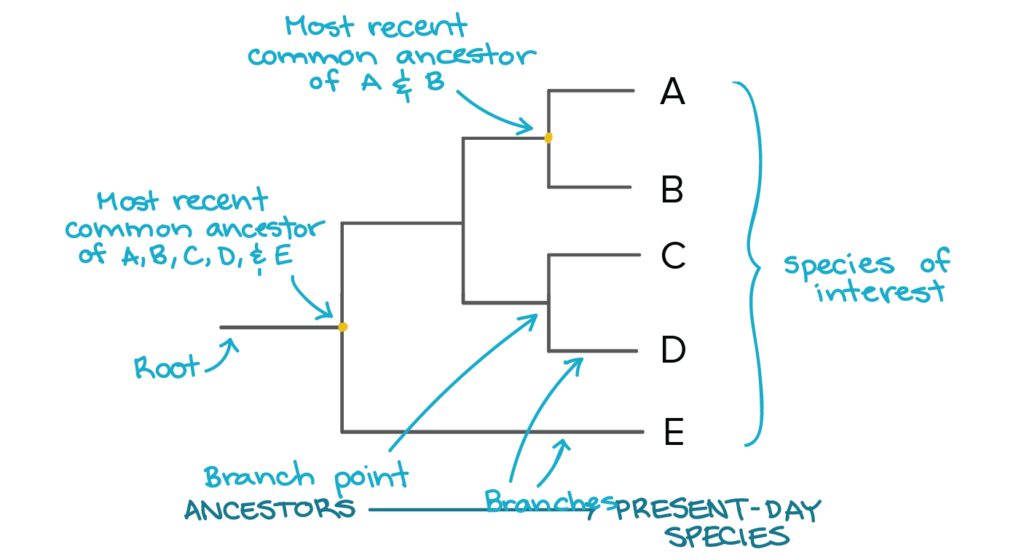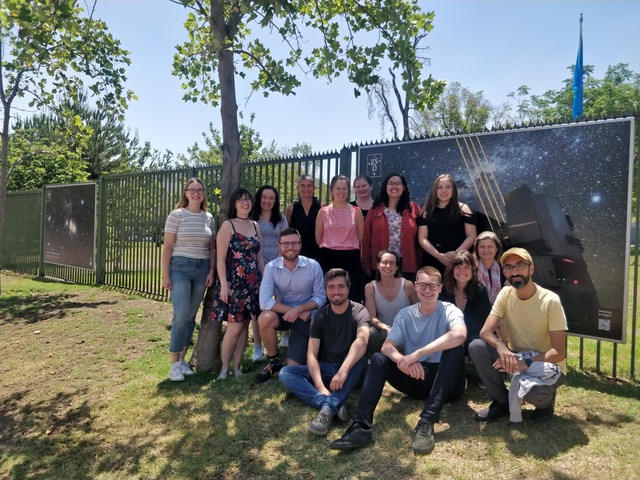Website: nucleomilenioeris.cl
One of the first diagrammatic evolutionary “trees” was created by Charles Darwin in his book “On the Origin of Species”, and since then phylogenetic trees have been used in biological sciences to represent evolutionary relationships among organisms. The pattern of branching in a phylogenetic tree reflects how species or other groups evolved from a series of common ancestors, where shorter distances between species indicates their evolution diverged more recently than those with longer distances between species. For example, in the diagram below species A is more similar to species E.

The aim of ERIS is to apply one of the principles of Darwin’s Theory of Evolution – descent with modification – to cosmic evolution.
With ERIS we aim to reconstruct the evolution of galaxies like the Milky Way using the phylogenetic trees to link the evolutionary histories of stars. Since trees are mathematical structures and graphs, with ERIS we are consolidating an interdisciplinary collaboration between astronomers, biologists and mathematicians, in order to achieve our goal. We will reconstruct the evolution of the Milky Way, our main galactic laboratory, by building and interpreting phylogenetic trees that are appropriate for astronomical data. To do so, we will simulate the evolution of galaxies, where we know their shared history. We will also use observed data, which will allow us to learn to deal with uncertainties, and ultimately help us to constrain the theory of galaxy evolution.
The key to connect stars with one another is the well known fact that massive stars synthesize chemical elements in their interiors, and at the end of their lives, they pollute the interstellar clouds from which new stars form. Chemically processed gas is what one generation of stars inherits from the previous one(s) and is the key observable for us to build the phylogenetic trees. Our strength is the fact that we know what elements are produced in which type of stars, and how much of each of them. The challenge is the fact that a galaxy is an open system: fresh gas comes from outside all the time, diluting the existing one. Also, different generations of stars contribute to the pollution of the same interstellar clouds. Therefore, the problem is manifold and intricate, just like the biological evolution of species.
Whilst the primary objective of ERIS is to establish this new field of research, there are other two complementary goals for the duration of the project. The first one is the training of young scientists in this field of research. We generate an environment in which students and young postdocs will actively interact and collaborate with the members of our team. The second one is the impact of interdisciplinary sciences in society. We are working on targeted schools to help them in their development of critical thinking skills.

